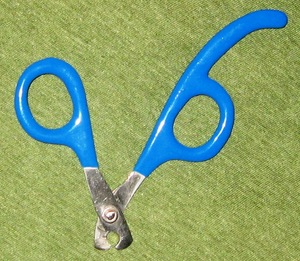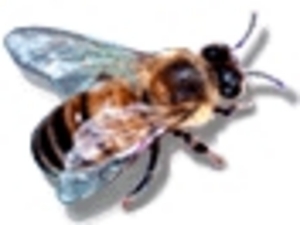Guinea pigs toenails grow constantly and when left uncared for can cause severe problems down the road. Thus, it’s best to start trimming their nails regularly (every month or so) starting at about two months of age when the nails are short and sharp. Beginning as early as you can as well as handling their paws regularly will help your pet get used to the sensation of nail clipping and will accordingly, make future clippings much easier on both of you.
So, how do you trim a guinea pig’s nails? The first thing you will need is a pair of nail clippers. I’ve used both the guillotine style clippers and regular nail clippers for humans. Both have worked equally well, so go with whatever feels most comfortable for you. Once you’ve picked out your nail clippers you’ll need to find the “quick” in your cavy’s nails. The quick is the blood vessel that runs through the middle of nail. It’s very easy to see in those guinea pigs with clear nails, but very difficult to see in those with black or dark nails. When trimming you must be very careful not to cut the quick. Doing so is painful for the guinea pig and will cause bleeding. If your guinea pig has dark nails you can locate the quick by either shining a flashlight under the nail or by looking under the nail for the solid ridge that indicates where the quick is. If looking under the nail you’ll notice it is in a U shape towards the end (where you will be trimming) and that the U becomes shallower and shallower until it forms a ridge and the quick begins.
Once you locate the quick you’ll need to hold your guinea pig so they can’t struggle and so that you have a clear view of the paw you’ll be working on. This is easier said than done. I find that covering my guinea pig’s head with a towel and holding their body still with the palm and last three fingers of my hand while pinching (not hard mind you!) the paw with my thumb and forefinger provides a pretty good hold. I also typically position my pig between my forearm and torso for added security. The amount of struggle you can expect varies from guinea pig to guinea pig so find what position works best for you and your pet. I’d love to hear of any that work particularly well, and of course, having an extra pair of hands to help makes the process much easier.
As for the actual trimming I recommend trimming the nails as you would your own, with the cutting implement horizontal rather than vertical. This lessens any pinching the guinea pig might feel and creates a more blunt edge to the trimmed nail. Go from nail to nail and trim below the quick, but not too low so as to not really cut any excess nail. If you have a nail with a particularly long quick you can trim small amounts from it every two weeks. This will encourage the quick to recede and allow you to eventually have even lengths across all nails, yet another added benefit to regular nail care. If you do cut the nail to short and cause the quick to bleed use a syptic pencil or powder to aid in clotting and make sure to watch that foot in the following days for any sign of infection.
Your guinea pig will most likely detest getting their nails trimmed and will let you know exactly how they feel about you for subjecting them to such cruelty, but with the knowledge that nail trimming is an important part of their grooming needs and a few treats on hand I’m sure they’ll forgive you. Well, until next month at least.









